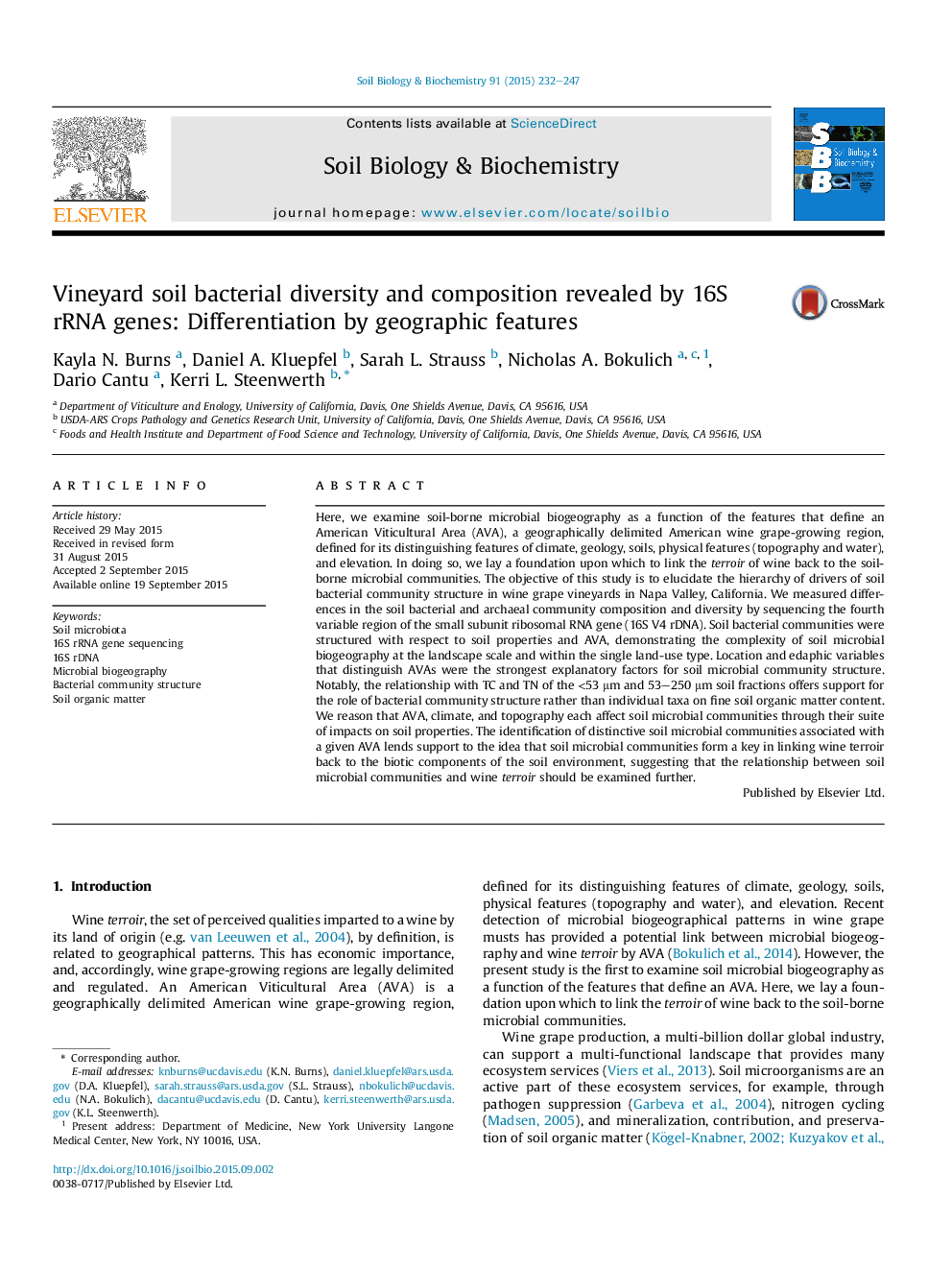| Article ID | Journal | Published Year | Pages | File Type |
|---|---|---|---|---|
| 8363830 | Soil Biology and Biochemistry | 2015 | 16 Pages |
Abstract
Here, we examine soil-borne microbial biogeography as a function of the features that define an American Viticultural Area (AVA), a geographically delimited American wine grape-growing region, defined for its distinguishing features of climate, geology, soils, physical features (topography and water), and elevation. In doing so, we lay a foundation upon which to link the terroir of wine back to the soil-borne microbial communities. The objective of this study is to elucidate the hierarchy of drivers of soil bacterial community structure in wine grape vineyards in Napa Valley, California. We measured differences in the soil bacterial and archaeal community composition and diversity by sequencing the fourth variable region of the small subunit ribosomal RNA gene (16S V4 rDNA). Soil bacterial communities were structured with respect to soil properties and AVA, demonstrating the complexity of soil microbial biogeography at the landscape scale and within the single land-use type. Location and edaphic variables that distinguish AVAs were the strongest explanatory factors for soil microbial community structure. Notably, the relationship with TC and TN of the <53 μm and 53-250 μm soil fractions offers support for the role of bacterial community structure rather than individual taxa on fine soil organic matter content. We reason that AVA, climate, and topography each affect soil microbial communities through their suite of impacts on soil properties. The identification of distinctive soil microbial communities associated with a given AVA lends support to the idea that soil microbial communities form a key in linking wine terroir back to the biotic components of the soil environment, suggesting that the relationship between soil microbial communities and wine terroir should be examined further.
Keywords
Related Topics
Life Sciences
Agricultural and Biological Sciences
Soil Science
Authors
Kayla N. Burns, Daniel A. Kluepfel, Sarah L. Strauss, Nicholas A. Bokulich, Dario Cantu, Kerri L. Steenwerth,
